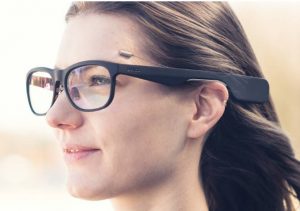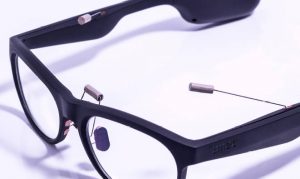[ad_1]
Sensing only voltages, the solution smaller, lower-power and cheaper than incumbent camera-based solutions, said the lab.
Measuring this natural diploe is called electro-oculography (EOG)
“Imec’s EOG technology utilises five dry-contact electrodes mounted on a standard pair of eyeglasses,” said Imec. “The electrodes detect the eye-movement, while the ergonomic design gives the wearer the comfortable familiarity of every-day glass frames.”
EOG is difficult, with surrounding eye muscles creating electrical interference during blinks and saccades (rapid glance changes), for example.
Imec appears to be on top of the processing required.
“We can either measure the muscles or the cornea-to-retina dipole. We can supress the one you don’t want,” said Imec wearables programme director Chris Van Hoof.
With both, lateral eye movements can for example be used to swipe and turn, while blinking could select.
The special dry polymer electrodes, shaped to maximise signal to noise ratio, were developed with specialist Datwyler.
Industrial design firm GBO was bought in to shape the glasses, which have batteries, processing electronics and Bluetooth transceiver in the side frames. Read rate is 256sample/s.
Eye tracking
Augmented reality and virtual reality (AR/VR) use is foreseen – for menu picking for example, and there are more serious applications in medical diagnoses, said Van Hoof.
“Eye movement analysis has been increasingly used in studies on neurological disorders, resulting in scientific evidence that eye movements are affected by neurodegenerative diseases such as Parkinson’s disease or Alzheimer’s disease, even at an early stage,” said Imec, which is involved in various medical research programmes and is proposing the glasses for early detection of neurodegenerative diseases and disease progression monitoring.
[ad_2]
Source link



